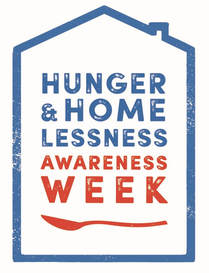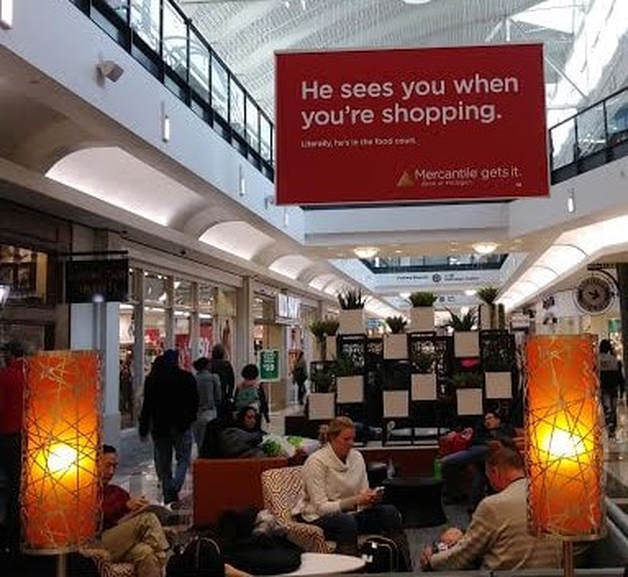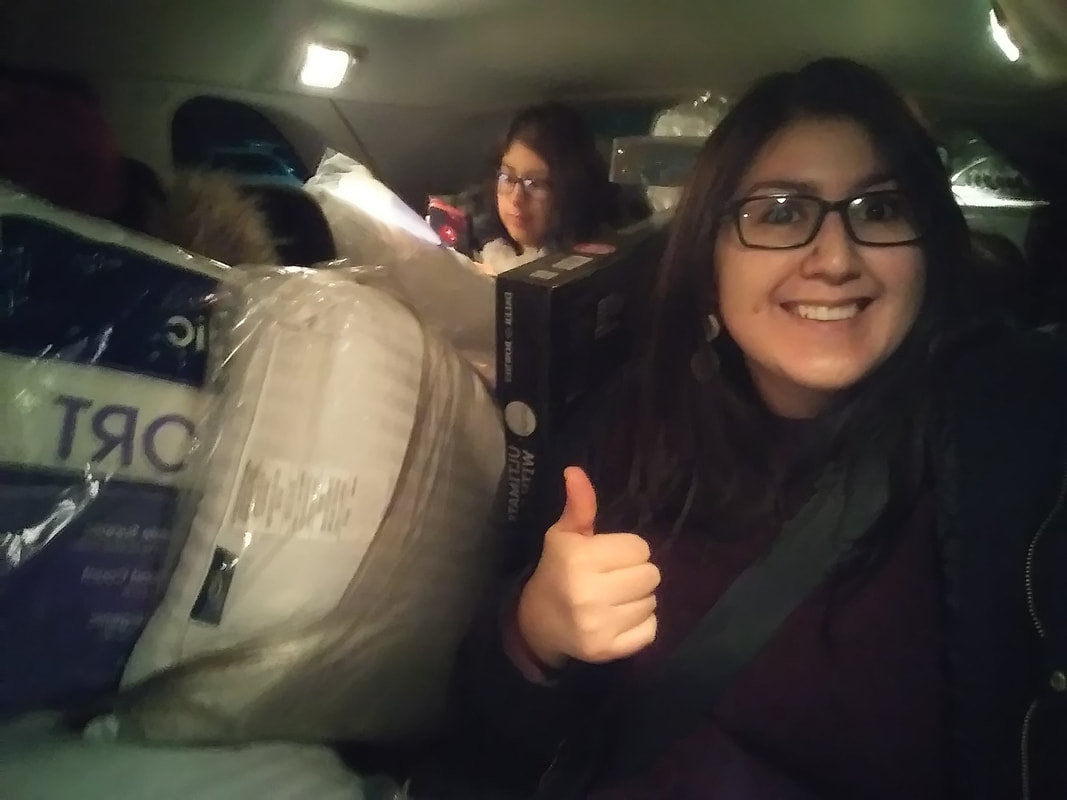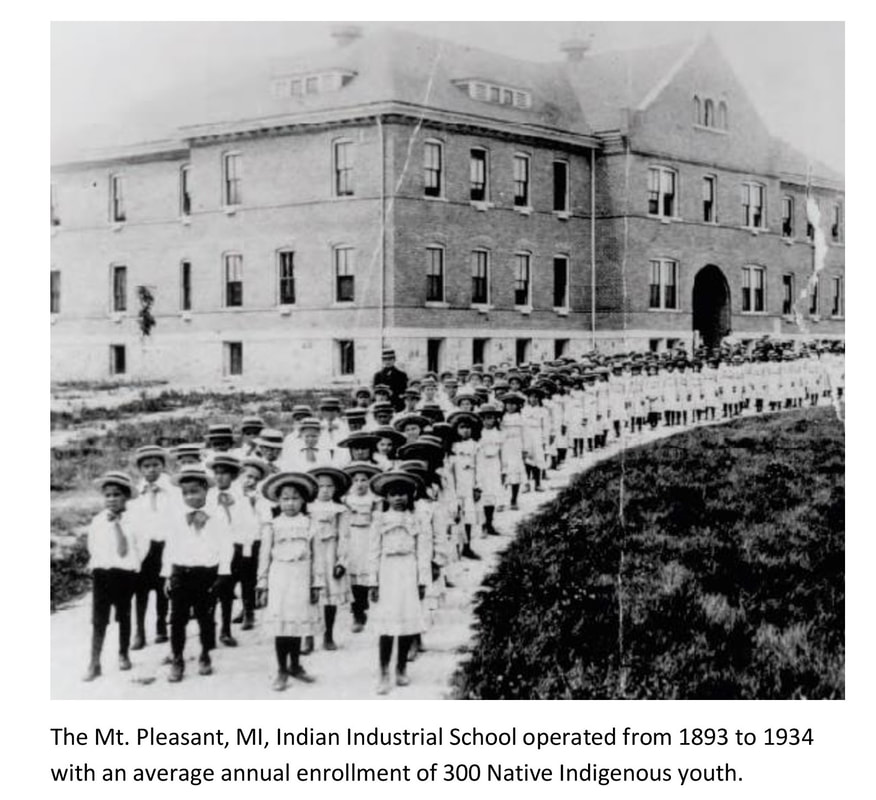|
Dear Editor,
As I’m sure you know, there is a group of individuals who have asked for the 3 Wisemen to be removed. I have started a petition to show that OUR community wants has a voice and we want them to stay put. Here is the link!! They have been displayed since 1941 I believe. This tradition needs to continue. https://www.causes.com/campaigns/128924-show-that-our-community-wants-the-3-wisemen-left-alone Jen Roesly  By Carmen Faulkner In my family, which is to say my parents, my partner, our extended families, our close friends, everyone with whom we hug openly, we are bad communicators. We sometimes speak a language of passive aggression, finding it easier to make remarks about poorly spent time or poorly seasoned food than address problems directly. We might mention our jobs, which really means we need to talk about money. We may bring up relationships, which really means we need to talk about hope or heartbreak. There was this time, awhile back, when our communicative ineptitude was exacerbated as my Dad was struck half-down by cancer. We talked then about logistics, about symptoms. We talked about the weather or color of the sky, attempting to synthesize our bleached hope for better days. We didn’t say ‘How can I reach you?’ ‘What am I doing wrong?’ We didn’t say ‘I would be devastated if this was it.’ Or, ’I have and will continue to fail you.’ We shuffled around rooms, patted one another on the shoulder, sighed a lot. During that time there were layers of lighthearted conversation masking love, masking difficult conversation, masking confusion, sometimes masking a bitterness that didn’t have a name. Sometimes when saying goodbye for a few days our voices would crack, and we didn’t really know why, but we’d make comments about beating traffic, mentioning that it ‘wouldn’t be long at all,’ until next time. We didn’t say ‘What if I never see you again?’ We didn’t say ‘Why haven’t I said to you all of those things I want to?’ There were occasions, though, during those times, that didn’t feel like some sort of weight, like peripherals singed dark at the edges. My Dad is a guitar player. He has been since he was 15 and, rebelling against his family or society or schooling or some invisible monster, he became one with reckless abandon. He flung his life into musicianship playing full time, then part time, then full time again. He loved old rock and roll, jazz and blues, country. He appreciated the greats: Johnny Winter, Duane Allman, Miles Davis. He learned from them about rhythm and soul and blues, carrying their lessons into the bands of his youth, his adulthood, and into today. After his treatments, when he was beginning to climb back up the rocky hill to health, he played his first gig in many months. He couldn’t sing, his voice left in a chemically-induced coma in a ditch somewhere, but he had his guitar. Our family was there, wide-eyed and nervous, wringing our fingers and smiling too much. We watched him that night, standing atop the cheap plywood deck, neon lights and plastic tarps advertising $2 Miller Lites, his thinned body clutching the guitar like a lifeline. Led by his former band, he stood just to stage left, his body dimpling in and out of the bright lights. They began with light hearted country, and his eyes lit up with the casual effortlessness of if all. His fingers flew up and down the fretboard, his eyebrows arched, hips swaying back and forth. We smiled, all of us in our family, deep down into our bones and across rooms or universes into each other. We breathed. Was it the first time in a long time? We breathed. Later in the set he began a Jeff Buckley version of Hallelujah and for a few minutes in that dirty bar the room was silent, suspended in some kind of time that doesn’t count down into the ends of minutes, but rather up into the heavens of them. The notes hung off each other, cascaded down staffs unseen into a haunting and beautiful weariness. In all of our eyes were tears, real tears of unapologetic sentiment. Something passed through us then, my emotionally bound family, a kind of hope or resolution or recognition. It may not have changed everything, all of our constipated conversations, but it did give us the space to breathe. That night gave us the space to try. All of that to say that what it took to bridge gaps of understanding in my family was bits of mahogany and string and carbon fiber. It was years of practice and patience and guidance from teachers or professors or idols. It was art. In my family, these issues, they are trivial. Petty dust-covered corners of human nature that could just as easily be swept up if we weren’t so stubborn. But we have larger issues, humanity, and in times of shouting and raging and raising of fists, I’d like to think that the answer could be the same as it was in my family. I like to think that if there were a gift that would transcend language and allow us to communicate, be it across borders or classrooms, across racial or socioeconomic or demographic divides, or even, to start, just across families adrift, it is this thing my Dad has. It is art. Looking now down roads into years or futures I know very little, but I know this now. I will forever give my kids art, and hope that they learn to communicate with it as my Dad has. Diary of a first-timer: Black Friday Edition
By Alicia Jaimes So, being 23 years old and a lover of all things discount, I feel a little ashamed to admit that I’ve never been Black Friday shopping. I never considered it because it always seemed like a far-off dream that people with a heftier paycheck enjoyed. Well, things were a little different this year. This year, my family decided to embark on the journey of bargains and deals. This is a story of adventure, sweat, and a little bit of tears. Fellow first-timers beware: this is Black Friday unedited. Pre-game- Thursday, Nov. 23 In a moment of spontaneity, my family and I decided to hit Fremont Walmart for their Thursday Black “Friday” sale. The sales began at 6 p.m. so we decided to head there around 7 p.m. to miss the crowd. We considered Thursday as a trial-run to the Friday shenanigans we had planned. We arrived at Wal Mart to see the parking lot full. Cars were parked on snow banks, in no parking lanes, and one was even at the entrance still running as someone sat in the driver’s seat. Trying to find a parking spot was difficult. Customers pushed carts filled with big boxes and bags. Many had a grin as they quickened their walk, slightly crouched, to their cars. with body’s on high-alert. Apparently, however, no amount of high-alert ever gets these folks to get out of the way of moving vehicles. We entered the store to find people. So. Many. People. Flooding the aisles, overtaking the registers—it was crazy. People were diving into boxes of clothes trying to find their perfect size, others ran to the other side of the store when they heard the $30 toys were marked down to $10, and then there was us, cramming as many pillows as we could into our two carts because they were only $2. Checking out wasn’t as scary as I expected but after paying everyone had to be inspected before leaving the store. I felt like a common criminal. Leaving the store, it was us who grinned and crouched as we wheeled our goodies to the car. It was then we encountered the problem of how we were going to fit them all into the car. By the time we got home it was about 10 p.m. and my sister and I still had to clip out coupons and come up with a game plan so we knew which stores to hit tomorrow. We hit the pillows at about midnight. Showtime, Friday, Nov. 25, 5 a.m. *BEEP, BEEP, BEEP* “Ugh, no, just a few more hours.” *Snooze* Later that day at a reasonable time… After getting too many hours of sleep, my mom, sister, brother and I packed our coupons and game plan and hit the road. We weren’t too upset to miss the craziness we’ve heard happens during the early morning retail battles. We were going to be on Alpine by about 1 p.m. and if we missed the really good sales, at least we had our sanity and could comfortably shop for the rest of the day. Ha ha. Cue Alpine: a mess of cars and soon-to-be car accidents. People were weaving in and out of each other, one even hit someone as we drove past the aftermath (the drivers were okay). Part of me shrugged this off as good ‘ole Alpine and the other part was uneasy with nervousness. We decided to stop at the strip mall before heading to Rivertown Crossings and walked into our first store. “Buy 3 get 3 free” covered the windows and entrance. What a deal! We squeezed ourselves between customers smelling candles and finding their favorite scents, and the line wound throughout the store, almost ending outside. Little did we know this would be the first of many lines we’d encounter that day. After flying through a few stores on Alpine, we decided we were ready for the big leagues as we headed to the mall. We were wrong. Everywhere was packed, and I swear we spent more time in lines than actually looking at the store. Our list, our game plan, our sanity—all out the window. After leaving our first store, hot and mad, I considered calling it a day. Luckily, after refueling our systems with sustenance from the food court, we felt stronger and more confident. Grabbing carts, we wove through crowds of people and began tossing in anything that was our size and seemed like a good deal. In the moment that I found five name-brand, $60 sweaters on sale for $10 each, I was bitten by the Black Friday bug. Nothing could stop me now! Except the mall closing—that’s right. We stayed until we were kicked out and still managed to miss three of the stores we wanted to get to. Conclusion Returning home at 10 p.m., my arms ached as giant bags hung from them, my back killed from spending the better-half of the day standing in lines, and my feet were puddles of jello, and I was on a discount high. Would I do it again? Absolutely. Would I sleep in until a reasonable time? Never again. I finally understand why people get crazy in the retail holiday: there’s just not enough time. With all the people and waiting in half-hour lines, you have to get up early just to make sure to get what you came for…and then some. Sure, I became the bug-eyed discount shopper, but hey, it’s only once a year and that’s good enough for me. “My foster mother told me … she would save me from being Penobscot.”
By Sally Wagoner Dawnland, a documentary about Native American children, culture and the Child Welfare System, will be shown on Sunday, November 18, 2:00 p.m. at Loomis Lodge, 136 Croton-Hardy Drive, Newaygo. This free event is open to the public and is being hosted by the Native Circle of Newaygo County, a non-profit organization dedicated to sharing culture and history from the Native American Indigenous voice. Due to the mature and sensitive nature of the film, older youth and adults as opposed to young children are the recommended audience. As recently as the 1970’s, one in four Native American Indigenous children were living in non-Native foster care, adoptive homes, or boarding schools This occurred due to the government policy that empowered agents to forcefully remove Native American children from their homes and place them with white families. Physical abuse, emotional harm, and cultural genocide were the results. In Dawnland , for the first time, these Native families are being asked to share their stories. This feature-length documentary goes behind the scenes of the first government sanctioned Truth and Reconciliation Commission in the United States to pursue this national tragedy. For over two years, Native and non-Native commissioners traveled across Maine. They gathered testimony and beared witness to the devastating impact of the state’s child welfare practices on families in Maliseet, Micmac, Passamaquoddy and Penobscot tribal communities. Collectively, these tribes make up the Wabanaki people “This is not ancient history,” reports one member of the Native Circle of Newaygo County. “We have Native families today, here in Michigan, who experienced these things personally in recent memory. The skeleton of a huge, industrial “Indian Boarding School” still stands in Mt. Pleasant. And these things still happen today with a Child Welfare system that is biased against Native parents. Many of our children are still taken from our People and placed in non-Native homes. Many of us suffer the intergenerational effects of our parents’ and grandparents’ traumas, and we are still finding our way to healing and home: physically, emotionally, geographically, and spiritually.” The name Dawnland refers to the Wabanaki People who live at the easternmost edge of Turtle Island (U.S and Canada). They are the first to see the new day’s light. The filmmakers state, “If harmony and justice begin in the east, as some prophesize, surely this Truth and Reconciliation Commission is a sign of this beginning.” The film will be preceded by prayers sung with Drum by area First Nations members to help prepare people and place for the difficult stories that unfold. Discussion will follow the presentation to help with understanding of this dark history and its continued influence on people and policy. All are welcome to participate in these events. For more information, contact the Native Circle of Newaygo County: 231.709.9005; [email protected]  By Cynthia Arneson Imagine being a 17-year-old high school senior and finding yourself homeless and on your own. It is a stark existence fraught with despair. There are currently more than 2 million homeless youth in the United States, with Michigan ranking sixth in the U.S. We do not evade this reality in our part of Michigan. There were 323 unaccompanied homeless youth reported last year in Newaygo, Oceana, Lake, Mason, Manistee, Missaukee and Wexford counties. Our youth, our children, need stability to thrive. Homelessness means instability. There are more than 36,000 homeless children in high, middle and elementary schools in Michigan, according to the University of Michigan. There were more than 63,000 people who experienced homelessness last year, according to the Michigan Coalition Against Homelessness. For youth without a parent, guardian or home, each day means spending a significant amount of time trying to find somewhere to stay for the night. They need to find someone who will put them up. The homeless youth in rural locales like ours are not quite as obvious as people sleeping on sidewalks you might see in places like Grand Rapids or Muskegon or even Big Rapids. Homeless young people sleep in tents, live in abandoned buildings or vehicles, or are, for most, continually couch surfing. Two local agencies are focused on helping homeless and runaway youth ages 12 to 21 years old: Staircase Youth Services and the Youth Attention Center. Based in Ludington, Staircase Youth Services serves Lake, Mason, Manistee, Missaukee, Oceana and Wexford counties. Based in Big Rapids, the Youth Attention Center serves Newaygo, Mecosta and Osceola counties. Both boast years assisting at-risk youth, with Staircase Youth Services established in 1972 and the Youth Attention Center in 1977. Both work with school districts and other agencies such as TrueNorth Community Services to assist youth and families in crisis. A recent survey by Staircase Youth Services and the Youth Attention Center of 287 area homeless youth provides insights into why they are on the streets scraping for an existence. The No. 1 reason is family dysfunction. Those situations include parents addicted to drugs, abuse and neglect, difficulties with blended families, overcrowded households and what they term unfair rules. Many shared they became homeless because their views differed greatly from their parents and they felt unaccepted. We also find youth identifying as lesbian, gay, bisexual, transgender or queer (LGBTQ) are six time more likely to experience homelessness. Youth also become homeless when their parents lose housing. Family poverty often results in parents moving away, and leaving older youth to fend for themselves. There are also youth aging out of foster care with nowhere to go. The fact is 17- to 21-year-olds often become homeless through no fault of their own. A lack of family support and life skills places these young people at risk for sex trafficking, drug use and chronic homelessness. Staircase Youth Services and the Youth Attention Center help our homeless youth find stable housing through host home programs. This allows youth to stay in their communities. Host homes are paid a monthly stipend to provide housing, food and guidance. The youth, their case manager and host parents work side by side to assist the youth in reaching their goals. They gain educational and employment support, life skills training, access to community resources and the support they need to foster their positive development. At Staircase Youth Services and the Youth Attention Center, the biggest successes we see are when our youth graduate from high school, go on to college or trade school, find steady employment and leave our programs feeling supported by their community. A supportive embrace is what our youth, homeless or not, need from us. We need to extend a helping hand; not a cold shoulder. Cynthia Arneson is executive director of Staircase Youth Services, a Ludington nonprofit that provides supportive, preventive, and homeless services for youth and families at-risk or in crisis. Staircase Youth Services, the Youth Attention Center and TrueNorth Community Services are helping raise awareness of homeless and hungry youth, adults and families during Hunger & Homelessness Awareness Week, which is November 10 to 18. November is Homelessness Awareness Month. |
Letter to the Editor PolicyNear North Now welcomes original letters from readers on current topics of general interest. Simply fill out the form below. Letters submissions are limited to 300 words. Archives
July 2024
Categories |



 RSS Feed
RSS Feed